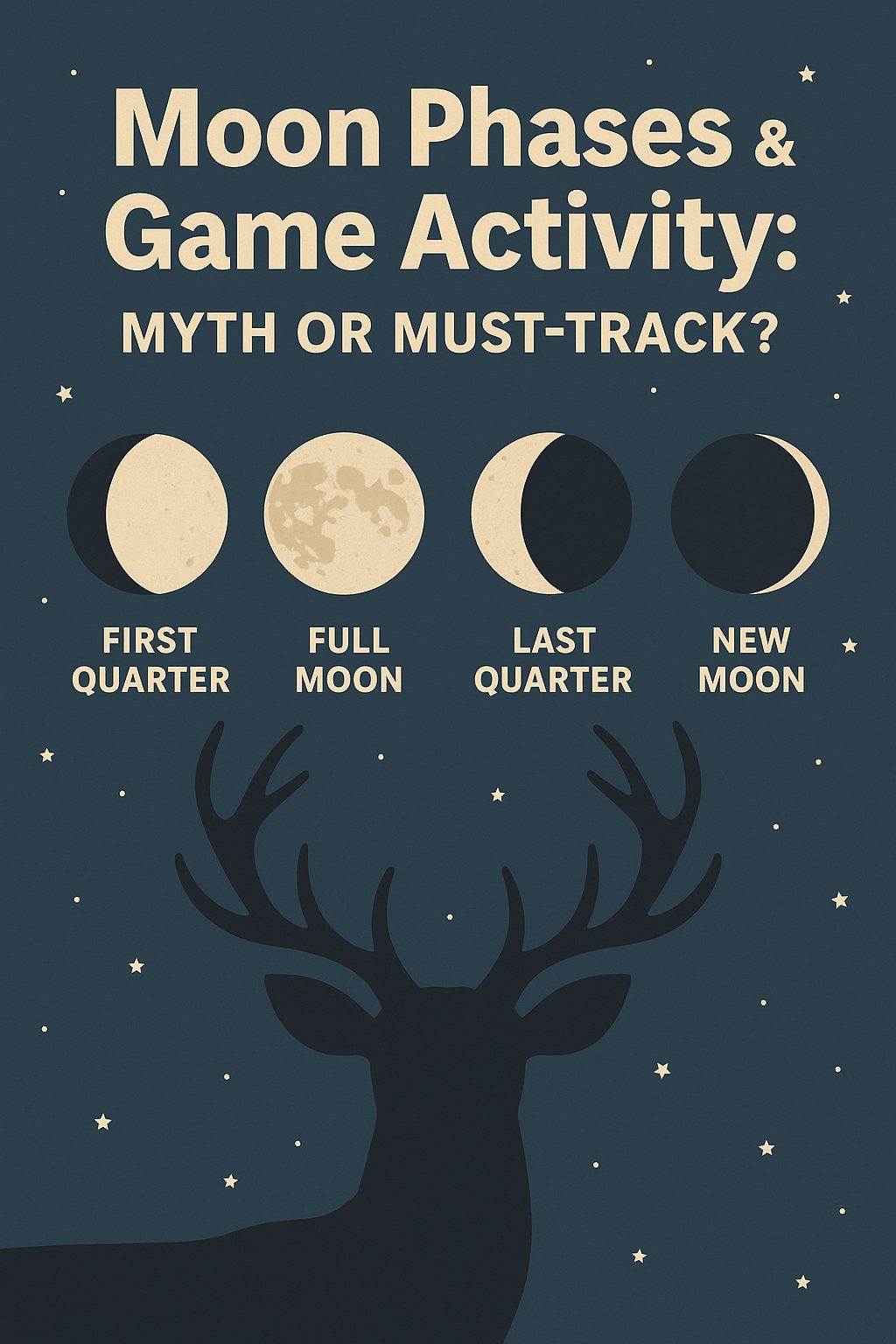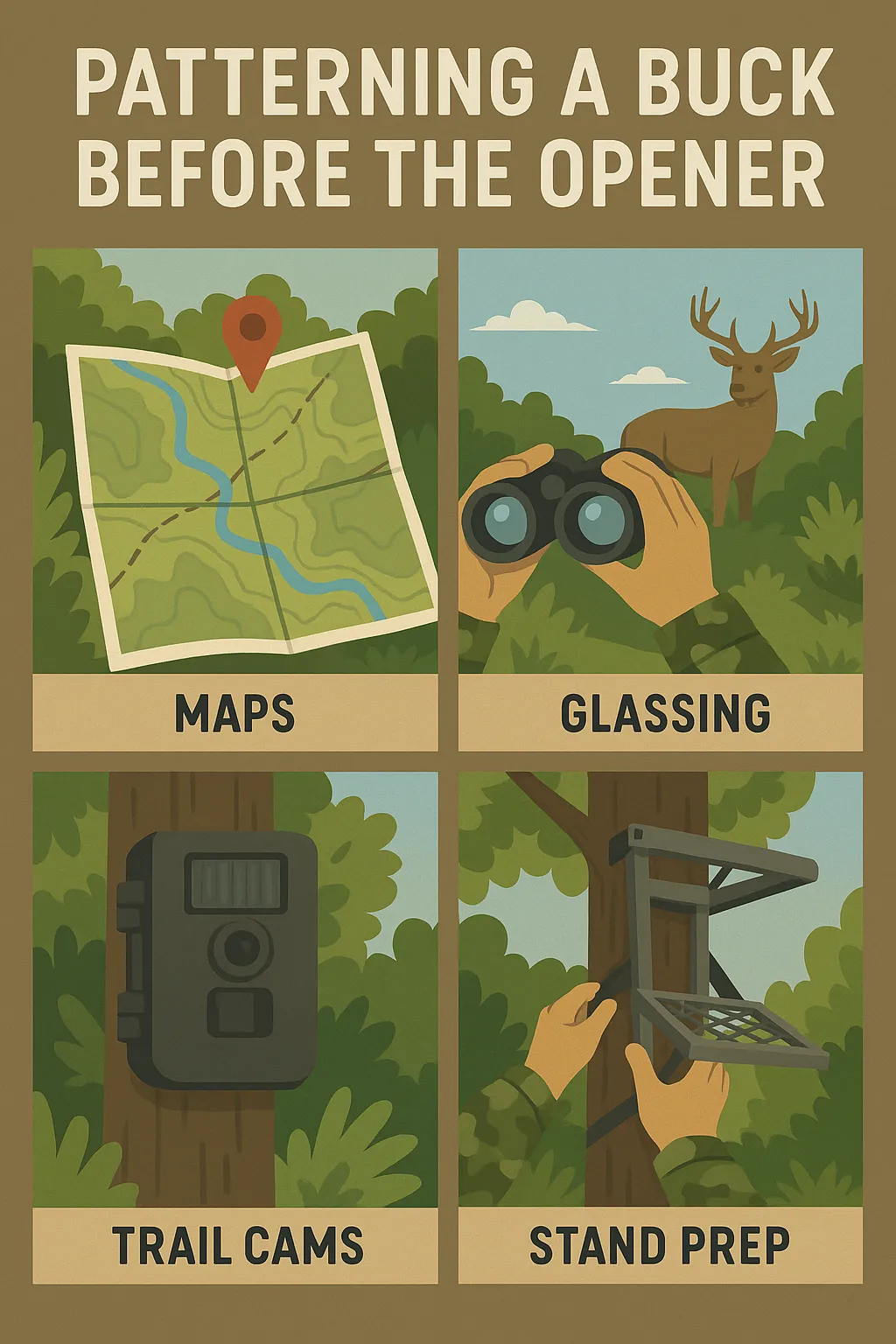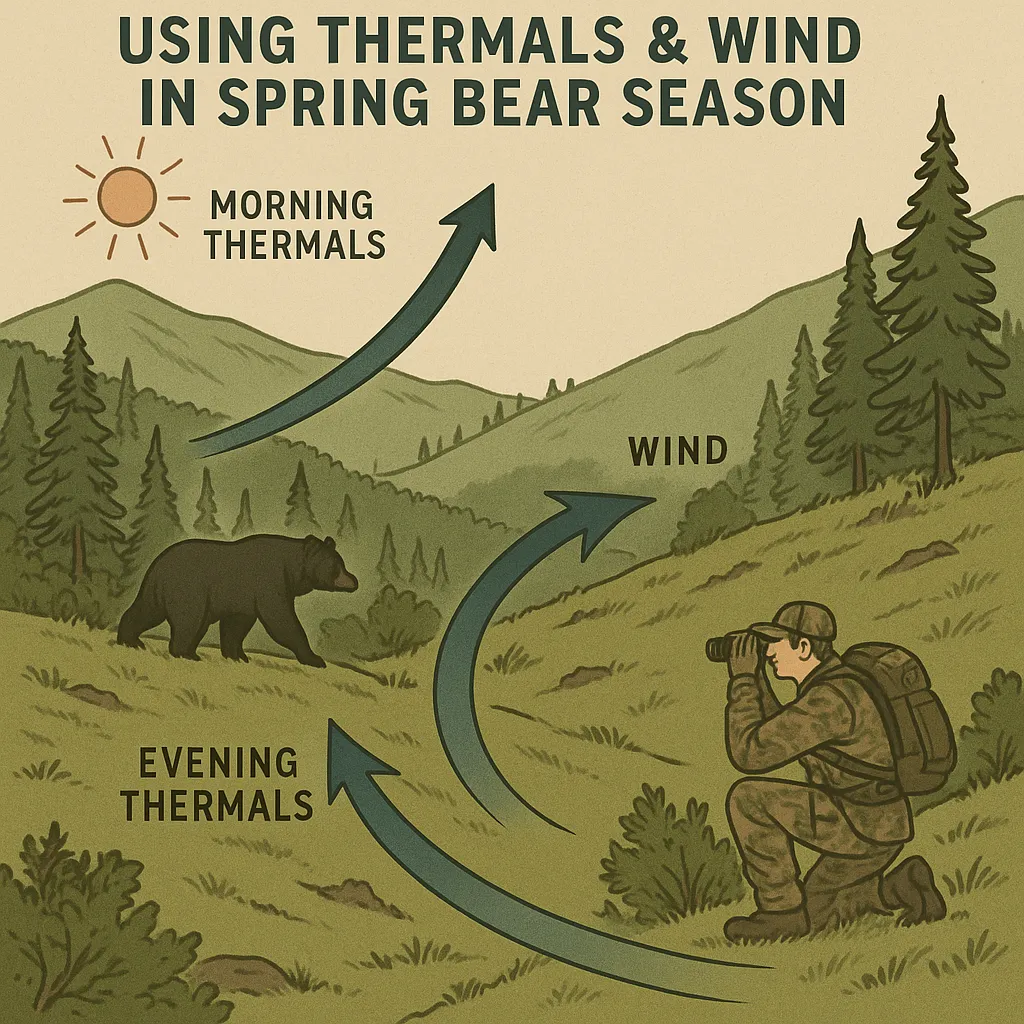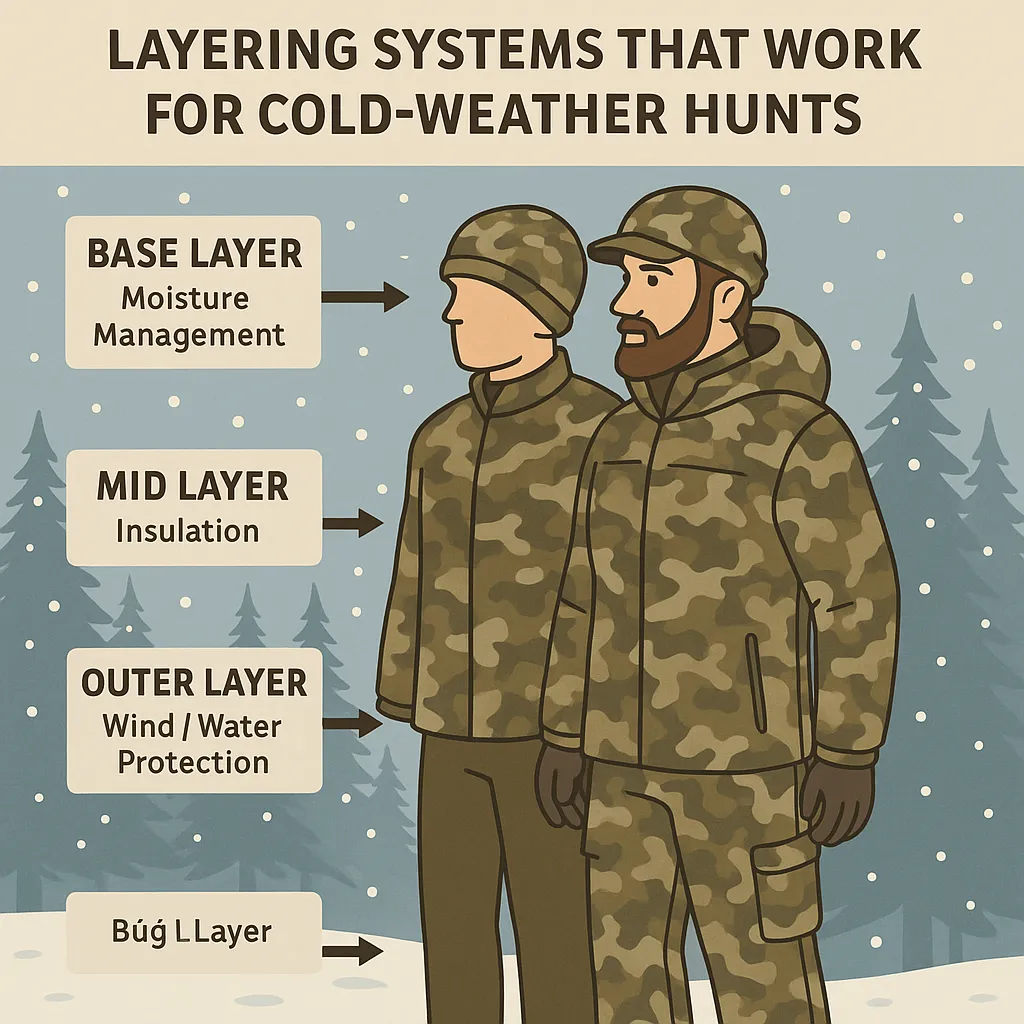
Moon Phases & Game Activity – Myth or Must-Track?
For decades, hunters have debated whether moon phases impact deer and big game movement. Some swear by solunar charts and full-moon feeding trends, while others dismiss it as backwoods folklore. In 2025, with more GPS-tagged wildlife data and field reports than ever, it’s time to break down the myth vs. must-track truth behind moon phases and game activity.
🌑 Moon Phases 101: What Are We Tracking?
The Four Primary Phases:
- New Moon: No visible moon — darkest nights
- First Quarter: Half moon — increasing illumination
- Full Moon: Full visibility — brightest nights
- Last Quarter: Waning half moon
🎙️ “Think of the moon like a slow-motion weather front—it shifts timing, not necessarily total activity.”
— Nate L., Missouri
🦌 What the Data Shows (And What It Doesn’t)
✅ Supported Trends:
- Full moon = more nighttime movement
- New moon = more daylight feeding
- Moon overhead/underfoot = minor activity bumps
- Bucks often bed longer during full moons due to extended nighttime movement
❌ Overhyped Claims:
- “The full moon kills hunting” — not always true, especially during the rut
- “Moon phase alone predicts success” — wind, pressure, and food are equally critical
🎙️ “I saw more bucks on their feet midday during full moons than any other time—don’t sleep on late sits.”
— Haley R., Ohio
📊 Moon Phase vs. Rut Behavior
| Moon Phase | Pre-Rut Impact | Peak Rut Effect | Post-Rut Behavior |
|---|---|---|---|
| New Moon | More AM movement | Moderate effect | Better midday feed windows |
| First Quarter | Balanced AM/PM movement | Can amplify scrape activity | Good evening sit potential |
| Full Moon | Less dawn/dusk action | Better midday cruising | Bucks return to feed late |
| Last Quarter | Ramp-up before new moon | Tends to favor PM movement | Slower but stable patterns |
🎙️ “The best rut chases I’ve seen happened on a full moon—at 12:30 p.m.”
— Mark D., Kansas
🧠 Field-Tested Moon Tracking Strategies
For Deer:
- Use solunar apps to predict minor/major windows
- Hunt midday during full moons—bucks shift hours, not activity level
- Match moon to cold fronts—best combo for daylight deer
For Elk:
- During early archery, new moons = vocal bulls at first and last light
- Full moon bulls bugle more overnight—focus on bedding area intercepts
For Predators:
- Coyotes and bobcats often respond better to calls on darker nights
- Full moons = clear visibility but less vocalization
🎙️ “I don’t obsess over the moon, but I do let it tweak my sit time—especially during the rut.”
— Sarah J., Kentucky
📲 Apps That Track It Well
- HuntStand – Moon overlays on weather and stand setups
- DeerCast – Predictive activity based on moon + pressure
- Solunar Forecast & Hunting Times – Classic approach
Pro Tip: Track the moon like you track wind—not as gospel, but as an adjustment layer.
🌟 Final Phase: It’s a Factor, Not a Forecast
Moon phase alone won’t make or break your hunt—but it will fine-tune your game plan. Think of it as one layer of intel in your bigger strategy. Combine moon data with wind, weather, pressure, and terrain—and you’ll hunt smarter without chasing shadows.
“Moon phases won’t make deer move—they’ll just help you know when they might.”
Leave A Comment
Related Posts
Using Thermals & Wind in Spring Bear Season In spring […]
Layering Systems That Work for Cold-Weather Hunts When the mercury […]






